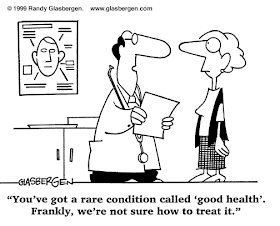I start with the first article.
From the tone, it is obvious to someone that OMG OMG OMG OMG OMG
Is that a problem? For most kids, that scares the germs right out of them until you line that statement up against this one:Fake drugs are increasingly being sold on the Internet in a global counterfeit medicines market that has doubled in the last five years to more than $75 million. The medicines, many of which are life-threatening, have even turned up in the legitimate supply chain and found their way into pharmacies, according a review by Dr Graham Jackson and colleagues published in the March issue of the IJCP, the International Journal of Clinical Practice.
And that's just for Lipitor, the cholesterol-lowering drug. So, if $26 Billion is only 6.5% of market, that means the market is worth about $400 billion.
Accounting for 6.5 percent of the total market share, statin drugs are the most widely sold pharmaceutical drugs in history. To date, Forbes Magazine tells us that statins are earning drug companies $26 billion in annual sales. ... Pfizer spends over $3 billion each year to convince us that we need more and more drugs to be healthy.
Aside: Pfizer pushes their drugs so hard that it incurred a $2.7 Billion fine for health care fraud (partly the largest criminal fine ever in any case in the US and partly for violations of civil law, the False Claims Act.) Pfizer sales in that same year: $48 billion. Pfizer profits in that same year, after paying that fine: $5.7 Billion. Much of that despite the fact that many other countries force Pfizer to charge far less for their product, but we digress ...
And then you find that the other, "much more acceptable", fake drugs have a fairly strong market as well:
The market for homeopathic and herbal remedies increased 17% from 2005-09 to reach $5.9 billion. As these once considered “alternative” remedies continue to transition into the mainstream, Mintel expects growth to continue at a steady rate, averaging 3.5% growth annually through 2015. This report explores the market for homeopathic and herbal remedies, looking at sales across all channels, as well as consumer usage habits and attitudes towards such remedies. Topics covered in this report include:..The report seems interesting, but I did not want to pay for that report to find out more details; the price was £2,464.53! "Add to Cart?" .... um, No.
That's the United States. Now multiply by 5 (maybe?) to get the Global ... $400 Billion for the US * 5 = $2 trillion.
75 million in (possibly) fake vs 2 trillion. Which means that fake-fakes are 0.00375% of the market. I'd interpret that as something to be improved but pretty damned good.Acceptable fakes (homeopathics), on the other hand are 0.295% of the market, nearly 80 times as big a problem.
Kinda makes that $75 million fade into insignificance, doesn't it?

For another example, many people worry about getting on a plane; the most dangerous part of the trip, however, was the drive to the airport. The inability to judge risks based on simple numbers is one of the worst results of the poor education so many students are receiving.
ReplyDelete